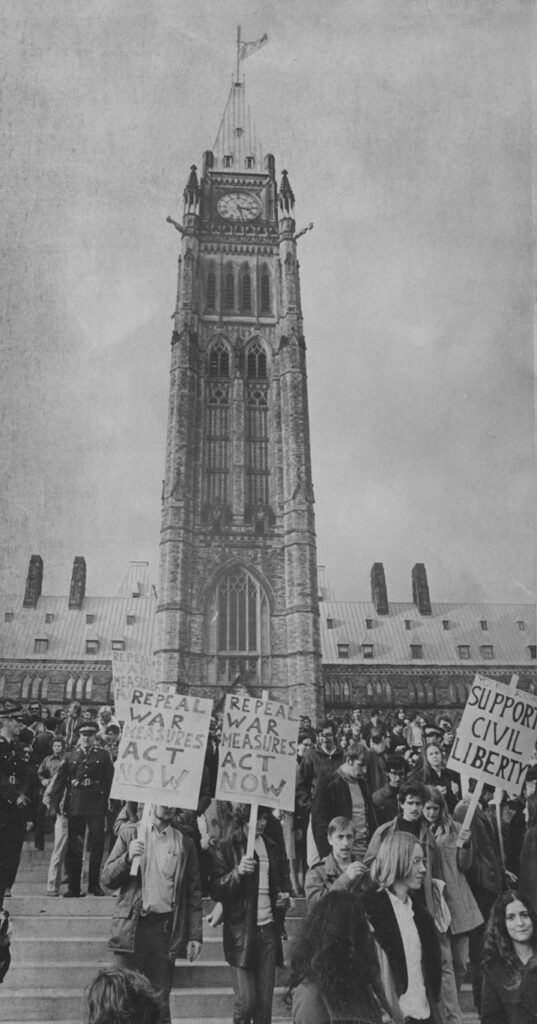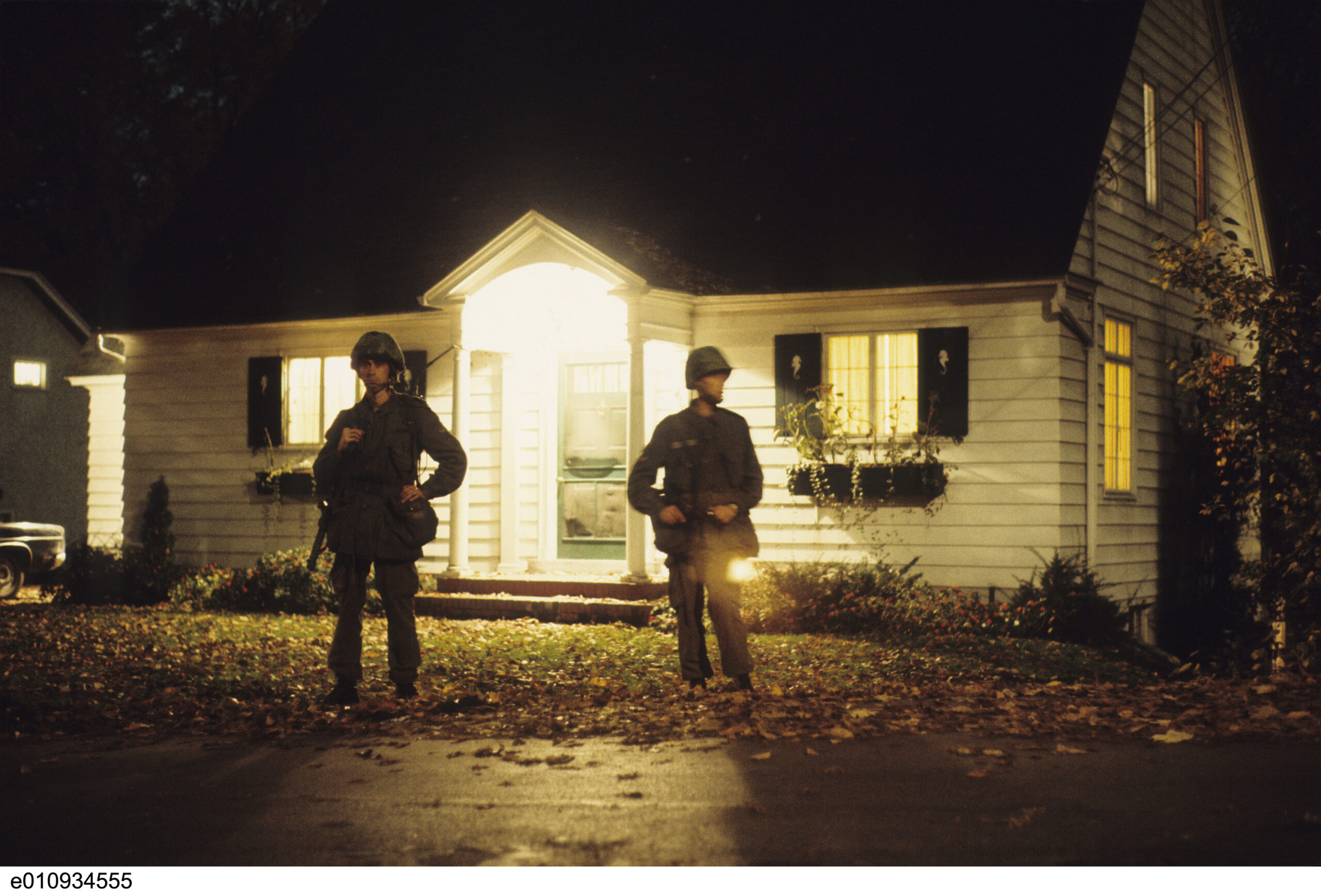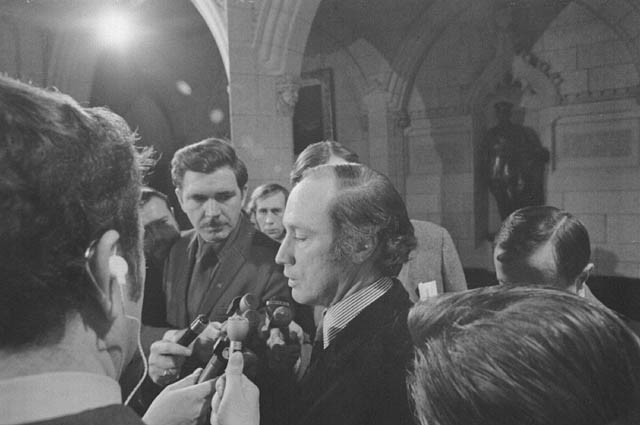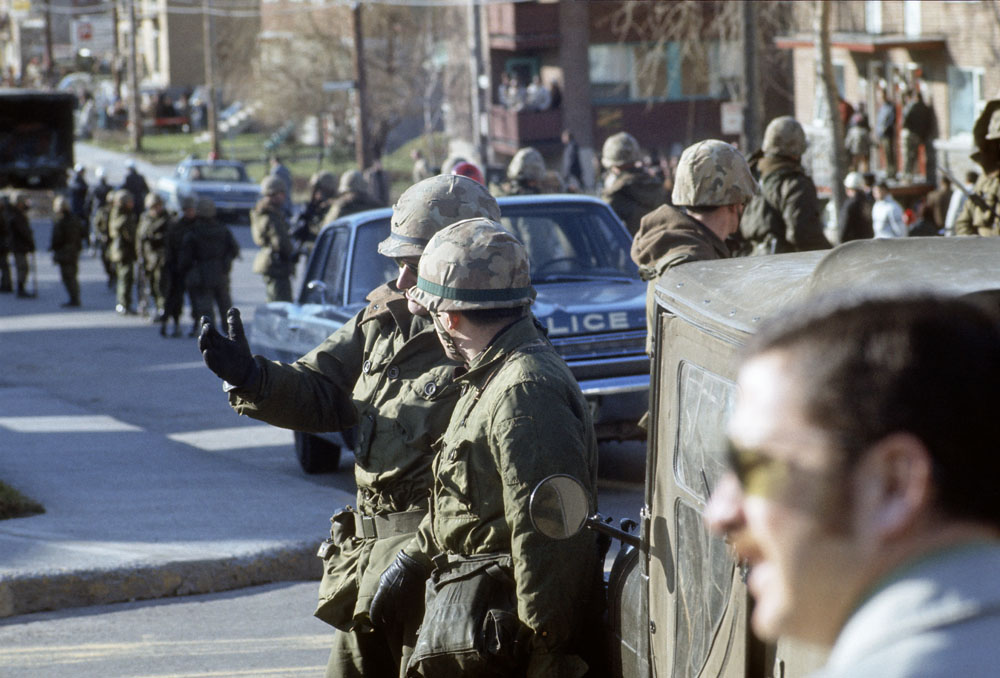Under the powers of the War Measures Act, the police conducted over three thousand searches and detained 497 people. Their actions were guided by a clear bias against nationalists and the political left in general, including many activists. Among the first to be arrested were Robert Lemieux, Pierre Vallières, and FLQ member Charles Gagnon. The initial targets also included Michel Chartrand of the Conseil central des syndicats nationaux de Montréal, Serge Mongeau of the Mouvement pour la défense des prisonniers politiques du Québec, and artists and writers Gaston Miron, Pauline Julien, Gérald Godin, and Michel Garneau. The average detainee spent a week in jail, and the vast majority (87 percent) were never charged with a crime. By January 1971, only sixty-two had been charged. Within a month, half of them were released and the charges were dropped. In the end, only eighteen people were convicted of a crime arising from the crisis. Except for FLQ members who were involved in the kidnappings, only two individuals were convicted under the Public Order Regulations (regulations specific to the crisis that were passed under the powers of the War Measures Act).
Everyone who was arrested under the War Measures Act was denied due process. Habeas corpus (an individual’s ancient right to have a judge confirm that he or she has been lawfully detained) was suspended. The Crown could hold suspects for seven days before charging them with a crime. In addition, before the seven days expired, the attorney general could order that the accused be detained for up to twenty-one days. Prisoners were not permitted to consult legal counsel, and many were held incommunicado. Membership in the FLQ became a criminal offence. In essence, criminal guilt was determined, not in a court of law, but through executive decree. Most importantly, the crime was retroactive. Under the terms of the Public Order Regulations, a person who had attended a single FLQ meeting in the early 1960s was criminally liable.

The use of the emergency powers resulted in extensive human rights abuses. Media censorship was rampant, especially for student newspapers. Several prominent media personalities were arrested and interrogated, including CKAC radiohost Louis Fournier, Journal de Montréal photographer Yves Fabre, and journalist Paul Chantraine. Radio-Canada vice-president E.S. Hallman cautioned his reporters about commenting on the crisis. Michel Bourdon was suspended and later fired from Radio-Canada for insubordination, and three other newsmen were dismissed from Radio-Canada’s news service for lack of objectivity. One scholar has suggested that “the most troubling aspect of the October Crisis was the pressure and the repeated attempts of intimidation [of the media] from the Canadian Prime Minister’s colleagues.” [Lachapelle 1990-1] Secretary of State Gérard Pelletier, for example, phoned and visited Claude Ryan (editor of Le Devoir) to encourage him and other editors to practise self-censorship. Trudeau’s chief of staff, Marc Lalonde, phoned newspaper editors and discouraged others from publishing the FLQ Manifesto. In Claude Ryan et la violence du pouvoir, Guy Lachapelle describes how journalists were intimidated: “Des journalistes furent molestés, perquisitionnés, détenus pendant plusieurs jours par les forces de l’ordre. Certains éditeurs de journaux censurèrent les articles de leurs journalistes. Des policiers déguisés en journalistes, ont filmé, lors des conférences des presses, ceux qui posaient des questions jugées trop embarrassantes pour le pouvoir d’État.”
Pelletier vigorously denied accusations that the government was pressuring the media and insisted that it had simply warned journalists to be sure of their facts. Clearly, tensions were high. The CBC postponed a few documentaries that dealt with political crises and kidnappings, cancelled several television shows (one because a lead singer was imprisoned under the War Measures Act), and did not air the documentary Testament of Lenin due to fears that it might incite the populace to violent action. At one point during the crisis, the president of the Federation of Professional Journalists of Quebec compared Canada to Paraguay and castigated Ottawa for censoring the publication of the FLQ Manifesto. Trudeau and his allies accused the media of alarming the public and giving the FLQ a partial victory by providing it with extensive publicity. For its part, the Syndicat général des communications, representing most journalists in Montreal, and the Association professionelle des journalists de l’Outaouais, called for changes to the War Measures Act to allow greater diffusion of information.
The press was not without fault. Unconfirmed rumours abounded in the pages of leading newspapers about the nature of Laporte’s murder and potential terrorist targets. Radio stations CKLM and CKAC broadcast FLQ communiqués before turning them over to the police (thus restricting the ability of the police to respond). In “The Terrorists’ Best Ally,” Raphael Cohen-Almagor concludes that “the behaviour of some organs of the French media exacerbated the crisis and forced the government to contemplate possible procedures for monitoring the media.”



